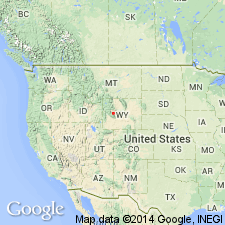
- Usage in publication:
-
- Pack Creek soil*
- Modifications:
-
- Named
- Dominant lithology:
-
- Soil
- AAPG geologic province:
-
- Paradox basin
Summary:
Name applied to a weakly developed soil on the lower member of Beaver Basin formation (new). Commonly zonal; azonal in places. Type locality is on Pack Creek just above National Forest boundary in SW1/4 NE1/4 sec 31, T27S, R24E, San Juan Co, UT, Paradox basin. Can be traced for long distances suggesting that it marks a widespread, but short, interval of nondeposition and slope stability within the Beaver Basin. Occurs as: 1) Brown Podzolic facies at 7,800-9,500 ft elev. with A horizon 12 to 24 in thick, gray, very fine to fine, angular to subangular blocky or granular structure, and B horizon 4 to 8 in thick, brown, structureless or weak, fine to medium, subangular to angular blocky structure; 2) Brown Forest facies between 7,000 and 7,800 ft elev. with A horizon 6 to 18 in thick, gray usually structureless, a locally discernable B horizon, and Cca horizon 6 to 12 in thick, brown; 3) Brown soil facies between 5,100 and 7,000 ft elev. with A horizon 4 to 18 in thick, gray to brown, ranging from moderate fine columnar to weak subangular, or angular blocky, a red-brown B horizon, structureless, weakly columnar to weakly blocky 6 to 8 in thick, and Cca horizon 1 ft thick, brown; 4) Sierozem facies at 4,000 to 4,600 ft elev. with thin, barely visible brown weak and blocky A horizon, and a 2 ft thick brown Cca horizon. Overlain by upper member of Beaver Basin. Soil profiles, correlation charts. Of late Wisconsin age.
Source: GNU records (USGS DDS-6; Denver GNULEX).
For more information, please contact Nancy Stamm, Geologic Names Committee Secretary.
Asterisk (*) indicates published by U.S. Geological Survey authors.
"No current usage" (†) implies that a name has been abandoned or has fallen into disuse. Former usage and, if known, replacement name given in parentheses ( ).
Slash (/) indicates name conflicts with nomenclatural guidelines (CSN, 1933; ACSN, 1961, 1970; NACSN, 1983, 2005, 2021). May be explained within brackets ([ ]).

